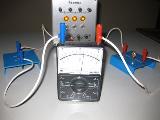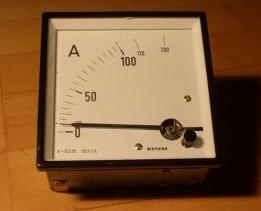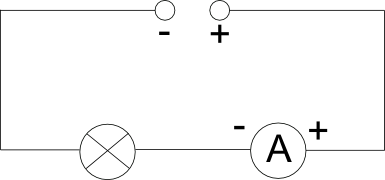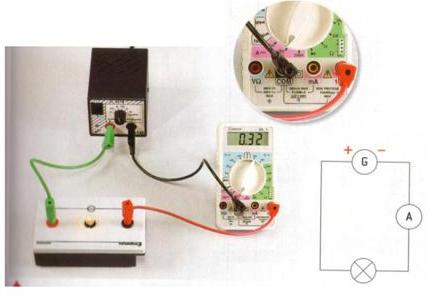What is the amperage?
 Electric current is the directed movement of electrical charges. The amount of current is determined by the amount of electricity passing through the cross section of the wire per unit time.
Electric current is the directed movement of electrical charges. The amount of current is determined by the amount of electricity passing through the cross section of the wire per unit time.
We still cannot fully characterize electric current by the amount of electricity flowing through a wire. Indeed, an amount of electricity equal to one coulomb can pass through a wire in one hour, and the same amount of electricity can pass through it in one second.
The intensity of the electric current in the second case will be much greater than in the first, since the same amount of electricity passes in a much shorter period of time. To characterize the intensity of the electric current, the amount of electricity passing through the wire is usually referred to a unit of time (second). The amount of electricity passing through a wire in one second is called amperage. Ampere (A) is taken as the unit of current in the system.
Amperage is the amount of electricity passing through the cross section of a wire in one second.
Current strength is indicated by the English letter Az.
Ampere — unit of electric current (one of SI base units), denoted by A. 1 A is equal to the strength of the unchanged current which, when passing through two parallel straight conductors of infinite length and insignificant area of the circle, a section located at a distance of 1 m from each other in a vacuum, would cause on a section of wire 1 m long, interaction force equal to 2 • 10–7 N for each meter of length.
The current in a wire is equal to one ampere if each coulomb of electricity passes through its cross-section every second.
Ampere — the strength of the electric current at which an amount of electricity equal to one coulomb passes through the cross-section of the wire every second: 1 ampere = 1 coulomb / 1 second.
Auxiliary units are often used: 1 milliampere (ma) = 1/1000 ampere = 10-3 ampere, 1 microampere (μA) = 1/1000000 ampere = 10-6 ampere.
If the amount of electricity passed through the cross section of the wire for a certain period of time is known, then the current strength can be found by the formula: I = q / t
If an electric current flows in a closed circuit that has no branches, then the same amount of electricity flows through each cross-section (everywhere in the circuit) per second, regardless of the thickness of the wires. This is because charges cannot build up anywhere in the wire. Therefore, the current strength is the same everywhere in the circuit.
In complex electric circuits with different branches, this rule (the constancy of the current at all points of the closed circuit) remains, of course, true, but it applies only to individual sections of the general circuit, which can be considered simple.
Current measurement
A device called an ammeter is used to measure current. Milliammeters and microammeters or galvanometers are used to measure very small currents. In fig. 1. shows a conventional graphical representation of ammeter and milliammeter on electrical circuits.

Rice. 1. Symbols for ammeter and milliammeter

Rice. 2. Ammeter
To measure the current strength, you need to connect the ammeter in the open circuit (see Fig. 3). The measured current flows from the source through the ammeter and receiver. The arrow on the ammeter shows the current in the circuit. Where exactly to turn on the ammeter, i.e. on the user (counting downstream) or after it, it is completely indifferent, since the current strength in a simple closed circuit (without branching) will be the same at all points of the circuit.

Rice. 3. Switching on the ammeter
It is sometimes mistakenly believed that an ammeter connected before the consumer will show a higher current than one connected after the consumer. In this case, it is considered that "part of the current" is spent in the user to activate it. This is of course not true and here is why.
Electric current in a metal conductor is an electromagnetic process accompanied by the orderly movement of electrons along the conductor. However, the energy is not carried by electrons, but by the electromagnetic field surrounding the wire.
Exactly the same number of electrons pass through each cross-section of wires in an ordinary electric circuit.How many electrons came out of one pole of the source of electrical energy, the same amount of them will pass through the consumer and, of course, go to the other pole, the source, because electrons, as material particles, cannot be consumed during their movement.
Rice. 4. Current measurement with a multimeter
In technology, there are very large currents (thousands of amperes) and very small currents (millionths of an ampere). For example, the current strength of an electric stove is approximately 4 — 5 amperes, an incandescent lamp is from 0.3 to 4 amperes (and more). The current flowing through the photocells is only a few microamperes. In the main wires of substations that provide electricity for the tram network, the current strength reaches thousands of amperes.

